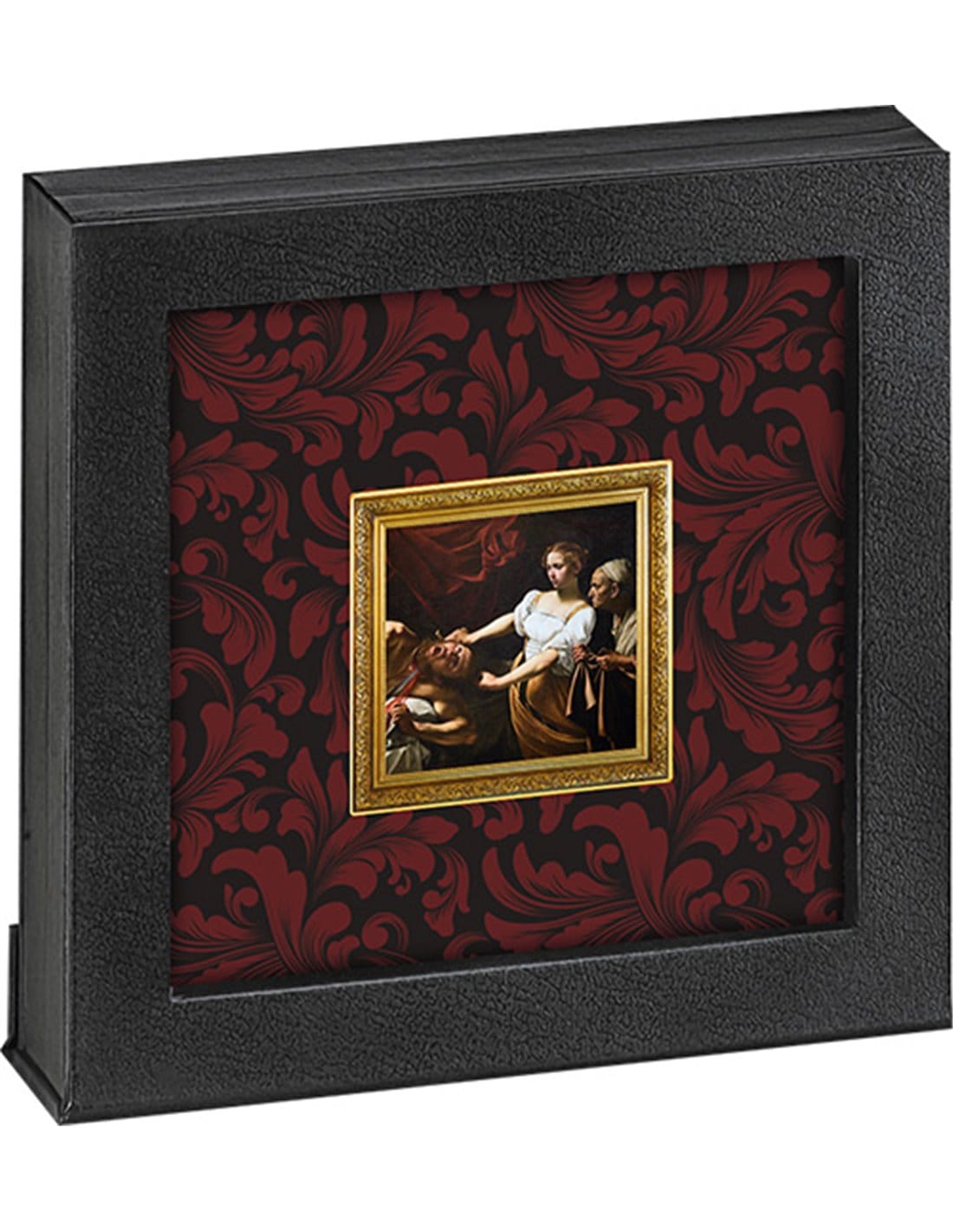Caravaggio’s Judith Beheading Holofernes isn’t just a painting; it’s a visceral experience. It plunges the viewer into the heart of a biblical narrative, the very instant Judith, a courageous widow, ends the life of the Assyrian general Holofernes. This is not a romanticized portrayal; it is a brutal depiction of violence. Caravaggio doesn’t flinch from the gory details, presenting the act in all its raw, visceral reality. His masterful use of light and shadow, reminiscent of a spotlight, intensifies the scene’s intimacy, placing the viewer almost within the tent itself.
A Brutal Act of Defiance
The painting is renowned for its realism and Caravaggio’s ability to capture the raw emotions of each figure. Judith’s expression is a complex one. While some may interpret her gaze as determined focus, others might perceive a hint of revulsion or even fear beneath the surface. Abra, Judith’s maidservant, displays a mixture of eagerness and apprehension as she holds open the bag to receive the severed head, emphasizing the collaborative nature of this desperate act. Holofernes, once a powerful general accustomed to command, is reduced to a victim, his face contorted in a silent scream, his power stripped away, his mortality exposed.
Deeper Meanings and Symbolism
This painting transcends a simple depiction of a beheading. It delves into complex themes of power dynamics, exploring its acquisition, loss, and precarious nature. The role of faith probably plays a significant part as well. Judith likely believed she acted upon divine instruction, fulfilling God’s will to save her people. Furthermore, the painting probes the depths of human nature—our capacity for both courage and cruelty, violence and vulnerability.
Symbolic elements enrich the narrative. The sword likely represents power and justice. The blood perhaps symbolizes sacrifice. The enveloping darkness may partially obscure the violence while simultaneously intensifying the drama and secrecy. [Are you interested in learning more about the life and legacy of one of the most well-known enslaved African Americans in United States history? Check out our article about beverly hemings.]
The Enduring Enigma of Caravaggio’s Intent
Caravaggio’s Judith Beheading Holofernes is not an easy painting to view. It confronts us with unsettling truths about human nature. Caravaggio’s precise intentions remain a subject of ongoing debate among art historians. Some suggest he explored the darker facets of human behavior, while others propose a celebration of Judith’s bravery and faith. Regardless of his intentions, the painting continues to provoke discussion, prompting reflection on the historical and religious context of the depicted event alongside the enduring themes of power, faith, and violence. Housed in Rome’s Galleria Nazionale d’Arte Antica, it stands as a pivotal work in art history, a powerful example of Baroque style, and a testament to the complex interplay of art, history, and the human condition.
Two Visions of Judith’s Triumph: Caravaggio vs. Gentileschi
The story of Judith and Holofernes has inspired numerous artistic interpretations. Two of the most famous versions, one by Caravaggio and the other by Artemisia Gentileschi, offer distinct perspectives on this dramatic biblical narrative.
Caravaggio’s Realism
Caravaggio’s 1599 rendition captures the very moment of the act with startling realism. His use of chiaroscuro, the dramatic interplay of light and shadow, focuses our attention on the brutal climax. The tension is palpable. Judith, though young, exhibits grim resolve, perhaps tinged with disgust. Holofernes, caught in a vulnerable moment, displays a mixture of pain and surprise. Some scholars suggest that Caravaggio sought a shockingly realistic portrayal, possibly influenced by the theatrical performances of his time.
Gentileschi’s Emotional Intensity
Artemisia Gentileschi’s 1620 version provides a contrasting interpretation. While Caravaggio emphasizes the physical act, Gentileschi focuses on the emotional weight of the moment. Judith’s portrayal is not merely determined; she is fierce, her face filled with righteous anger. Holofernes’ expression conveys terror, the realization of his impending doom. Gentileschi’s own experiences with violence and injustice likely informed her emotionally charged depiction, which may have resonated deeply with women of her time. You can learn more about Spanish conquistadors by clicking here: conquestador
Comparing the Masterpieces
| Feature | Caravaggio’s Version | Gentileschi’s Version |
|---|---|---|
| Emphasis | Realism, physical act | Emotion, psychological impact |
| Judith’s Portrayal | Determined, resolute | Powerful, vengeful |
| Holofernes’ Portrayal | Vulnerable, surprised | Terrified, oppressed |
| Overall Mood | Tense, brutal | Triumphant, liberating |
The influences and interpretations of both masterpieces continue to be debated. Some believe Gentileschi may have drawn inspiration from Caravaggio, while others argue for a deliberate divergence to express her unique perspective. The ongoing discourse surrounding these paintings contributes to their enduring fascination, offering insights into art, gender, and power dynamics centuries later. Both works showcase exceptional technical skill, capturing the human form and the scene’s drama with stunning realism. Their use of color, light, and composition contributes to their lasting impact on art history.
The Ongoing Debate and the Complexity of Judith’s Act
The story of Judith and Holofernes has been interpreted in various ways throughout history, with some viewing Judith as a heroic liberator and others questioning the ethical implications of her actions. This moral ambiguity adds another layer of complexity to the artistic representations, inviting viewers to consider the narrative from multiple perspectives. When encountering depictions of “Judith Slaying Holofernes,” reflect on the artist’s choices and the message they convey. You might be surprised by the insights you uncover.
Unmasking Judith: The Woman Behind the Legend
The image of Judith holding the severed head of Holofernes is undeniably powerful. But who was this woman, and why is this moment so significant?
A City Under Siege
Judith, a biblical heroine, was a widow from Bethulia, an Israelite town besieged by the Assyrian army led by General Holofernes. With Bethulia on the brink of surrender, Judith, driven by courage and deep faith, devised a daring and dangerous plan.
A Calculated Deception
Dressed in her finest attire, Judith infiltrated the Assyrian camp, using her wit and charm to gain Holofernes’ trust. Feigning defection, she offered information she claimed would lead to Bethulia’s downfall. Over time, she earned his confidence and, during a feast, exploited his drunken state. With her maidservant’s assistance, Judith used Holofernes’ own sword to behead him, an act of defiance that altered the siege’s course.
A Symbol of Courage and Faith
Caravaggio’s painting captures the raw emotion of this pivotal moment–Judith’s strength, the weight of the head, and her maidservant’s horror. Judith returned to Bethulia with Holofernes’ head, inspiring the Israelites to fight and ultimately defeat the demoralized Assyrian army. Judith’s act transformed her into a symbol of courage, faith, and unlikely heroism, a testament to the power of an individual to overcome seemingly impossible odds.
Caravaggio’s Striking Portrayal
Caravaggio’s use of tenebrism—strong contrasts between light and shadow—creates a dramatic atmosphere that underscores the brutality while highlighting Judith’s resolve. The painting, though unsettling, confronts us with the complex emotions surrounding violence, faith, and liberation.
Enduring Interpretations
The story of Judith and Holofernes remains open to interpretation. Some view her as a righteous hero, while others question her morality. Some scholars suggest an allegorical reading, representing faith triumphing over oppression. Others focus on female agency within a patriarchal society. The debate continues, ensuring the story’s enduring relevance.
Caravaggio’s painting captures a defining moment in a dramatic tale. It prompts reflection on courage, sacrifice, and the blurred lines between heroism and violence. While depicting a specific biblical event, it explores universal themes that resonate today. It reminds us that history is full of unexpected turns and that even in the darkest hours, hope and courage can arise from unforeseen sources.
- Unlocking Francis Alexander Shields’ Finance Empire: A Comprehensive Biography - July 12, 2025
- Unveiling Francis Alexander Shields: A Business Legacy - July 12, 2025
- Francis Alexander Shields’ Business Career: A Comprehensive Overview - July 12, 2025















